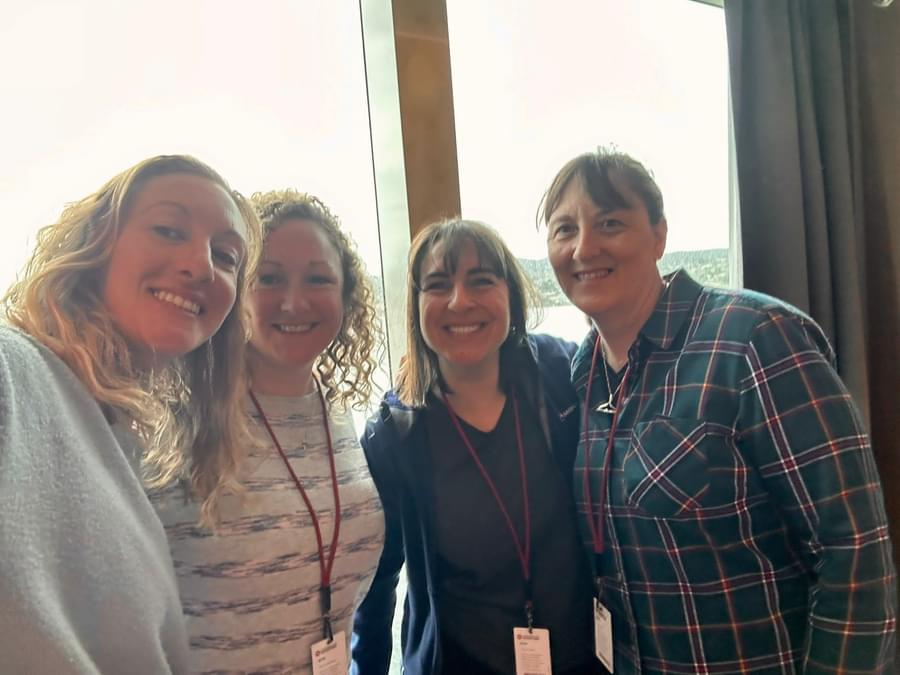Our Conservation Monitoring Officer, Ellie, is back from an incredible adventure to the Southern Ocean! Read on to find out more...
This month has seen the start of the 2023-2024 Antarctic season and ORCA’s Southern Ocean Distance Sampling Project. Teams of experienced Marine Mammal Surveyors have been collecting data on large whales in the Southern Ocean from Hurtigruten’s MS Fram vessel, for an exciting project working in collaboration with the International Association of Antarctic Tour Operators (IAATO), British Antarctic Survey, Hurtigruten, and the Government of South Georgia and the South Sandwich Islands. The project aims to better understand the abundance and distribution of recovering whale populations in the Southern Ocean, with a particular focus on large baleen whales around South Georgia and the Antarctic Peninsula. ORCA devised and conducted a bespoke research project for the 2022-2023 Antarctic season, and this important research has now begun for the second year running. By identifying high density areas, ORCA hopes to enable mitigation measures to be implemented to protect these incredible animals in this area where shipping traffic is increasing. Data collected last year has already been used to safeguard whales in these areas!
I became involved with ORCA as a Marine Mammal Surveyor in 2018, and now work at ORCA HQ in Portsmouth as ORCA’s Conservation Monitoring Officer. The opportunity to visit Antarctica to conduct whale research has been a once in a lifetime opportunity and a real career highlight. I was thrilled to be joined onboard by Jayne, an experienced and dedicated Marine Mammal Surveyor and Team Leader, to start the data collection for this season.
We boarded MS Fram on Friday the 3rd November, and after settling in and getting our bearings we departed Punta Arenas that evening. Almost as soon as we left we saw a pod of dolphins out of the window, and headed up onto deck to start a survey using ORCA’s OceanWatchers app. With perfect surveying conditions and regular sightings of Commerson’s dolphins, we hoped this was a sign of good things to come!
After leaving Punta Arenas, we had a sea day before our arrival in the Falklands. During this time, we were involved in citizen science introductory presentations and workshops, where we had the opportunity to introduce ourselves and give an overview of the project to guests on board. We also met with the Captain, to discuss the project and access to the bridge of the ship for our distance sampling surveys.
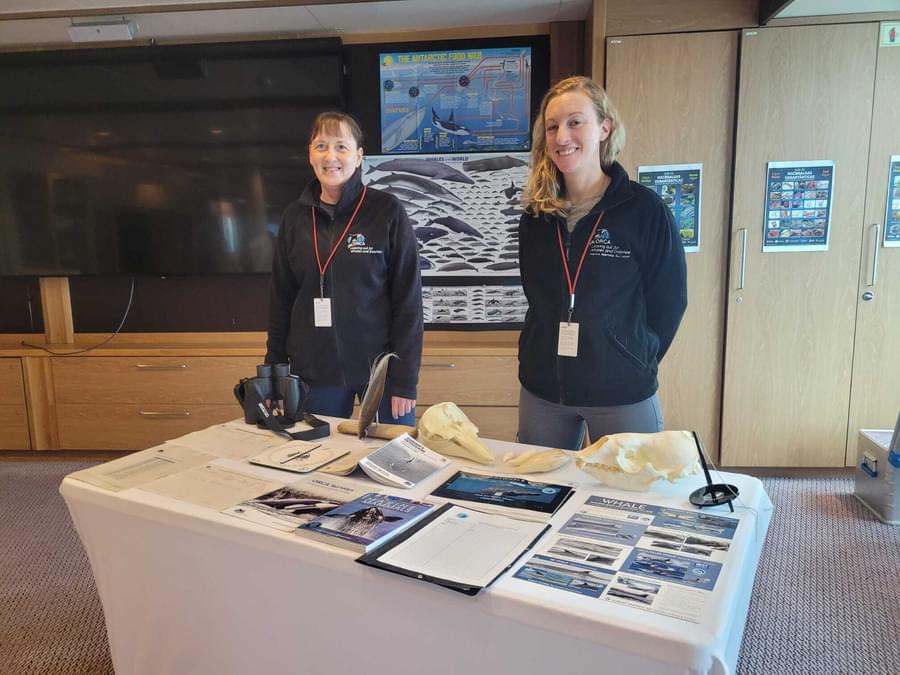
During this time, we also conducted training with the Expedition Team who were going to be assisting with our distance sampling bridge surveys. Although the team helping us had already carried out extensive online training in preparation, this was a great opportunity to answer any questions and practice using the survey equipment. As Jayne went through the use of reticle binoculars, which have a measuring device in the eyepiece which helps us accurately measure the distance of cetaceans from the ship, a large pod of Commerson’s dolphins appeared giving us the perfect opportunity to practice!
We arrived in the Falklands on the 5th November and spent three days there, where unfortunately thick fog hindered our ability to conduct any bridge surveys. Fortunately, we were still able to collect important data out on deck using ORCAs OceanWatchers app, and we were up early and surveying between landings each day. We were treated to more Commerson’s dolphins during this time, and particularly enjoyed watching them play in the surf on Saunders Island!
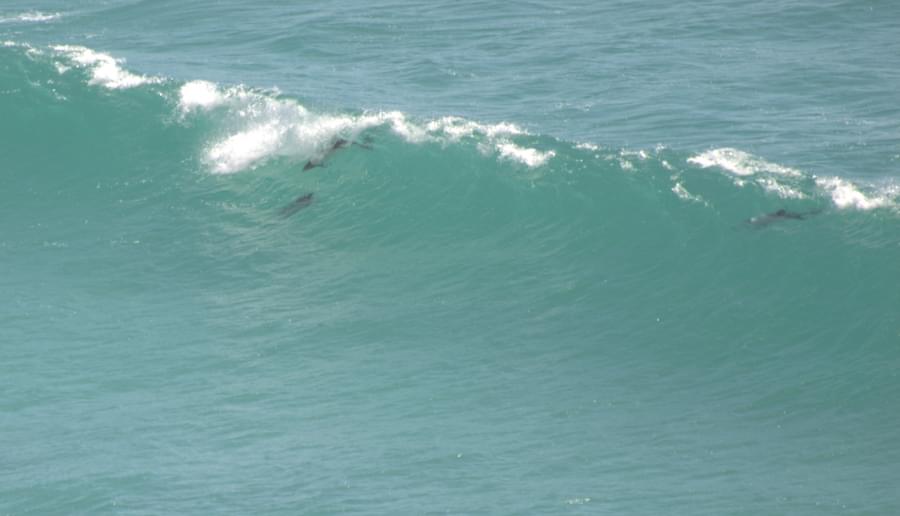
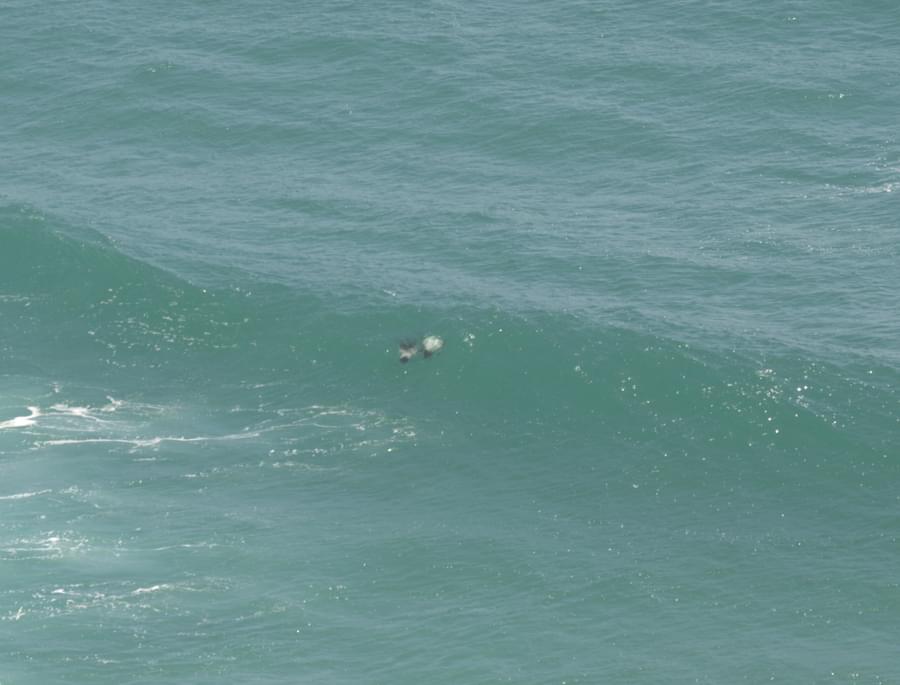
We left Stanley on Tuesday 7th November and were able to conduct a survey that evening, where we were really excited to see our first whale of the trip! We weren’t close enough to get an accurate species identification, but the large blow from the animal indicated to us that it was a large baleen whale (one of our target species).
After leaving the Falklands we had two sea days, and an opportunity to conduct several bridge surveys, following a strict surveying protocol. It was such a privilege to be able to conduct this important research from the bridge of the ship, and we were so grateful to the captain and crew for accommodating this. In our survey team, when we started surveying, we took up our positions, with one of us recording the data and two of us observing from each side of the ship. Unfortunately, heavy fog on our approach to South Georgia hindered our ability to survey from the bridge, but this was a great opportunity for us to get out on deck and chat to guests about the project.

South Georgia provided a spectacular backdrop for our surveys between the 10th-13th November, and we were rewarded with regular sightings of humpback and minke whales. It was previously thought that large whales were only sighted in this region later in the season (from January to March), but even from ORCA’s first year of data collection, humpbacks were recorded early in the season. The start of this season’s surveys on Fram were no different, with humpbacks recorded on each survey conducted by Jayne and I around South Georgia.
South Georgia was the epicenter of the global whaling industry in the early 20th century, with over 175,000 whales killed here between 1904-1965. The populations of large whales in the region collapsed during the 1960’s, with whales virtually disappearing from the surrounding waters. Humpback whales have made an incredible comeback with large aggregations being sighted around South Georgia during the summer months since 2013. It was sobering to see what remains of the whaling stations at Grytviken and Stromness, now taken over by wildlife with elephant seals, fur seals and penguins calling these areas home. Since the 2022-2023 Antarctic season voluntary 10kt speed restrictions have been in place around South Georgia, to protect large whales from the increasing shipping traffic, and mitigate against the threat of ship strike.
We left South Georgia on the 13th November and had a sea day before arriving at Signy Island on the afternoon of the 15th November. Excellent sea conditions gave us the opportunity to survey from the bridge, and we were rewarded with regular sightings of humpback and fin whales. With the highest numbers we had recorded so far, and many guests getting to enjoy seeing them throughout the day. We spent several hours at Signy Island, dropping off a team of British Antarctic Survey personnel to the research station there. Jayne and I were up early the following day to survey from the bridge during the approach to Half Moon Bay, our first stop on the Antarctic Peninsula. Again, we were rewarded with sightings of humpback and fin whales, an excellent sea state, and most importantly – no fog!
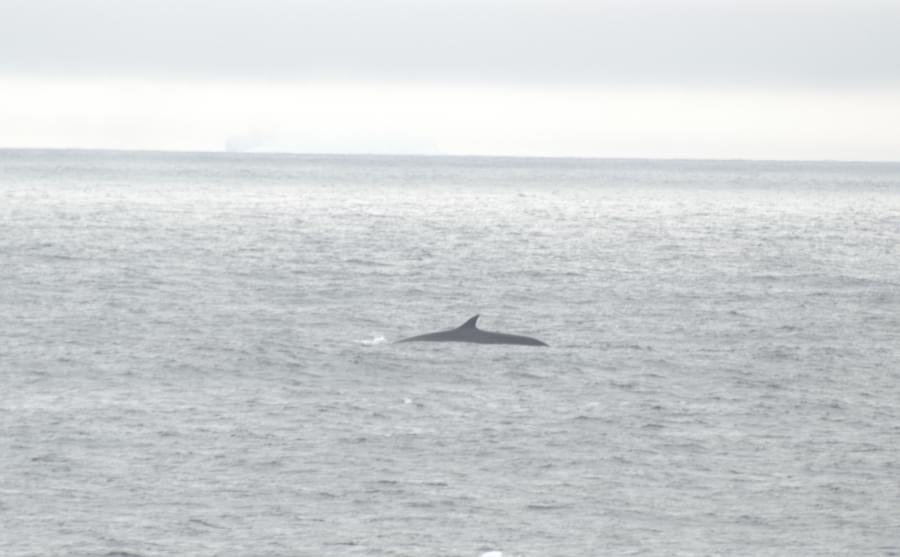
We spent the next five days surveying around the Antarctic Peninsula, with stops at Deception Island, Orne Harbour, Cuverville Island, and Danco Island. The large amounts of ice, especially around the Gerlache Strait meant that it wasn’t possible for us to conduct bridge surveys, however we were still able to survey from deck and had regular sightings of humpback whales during this time. The humpbacks we saw were moving slowly, milling and feeding, which was a great opportunity not only for guests on board to see them, but for us to get photos of the undersides of their tail flukes, which can be used for identification purposes.
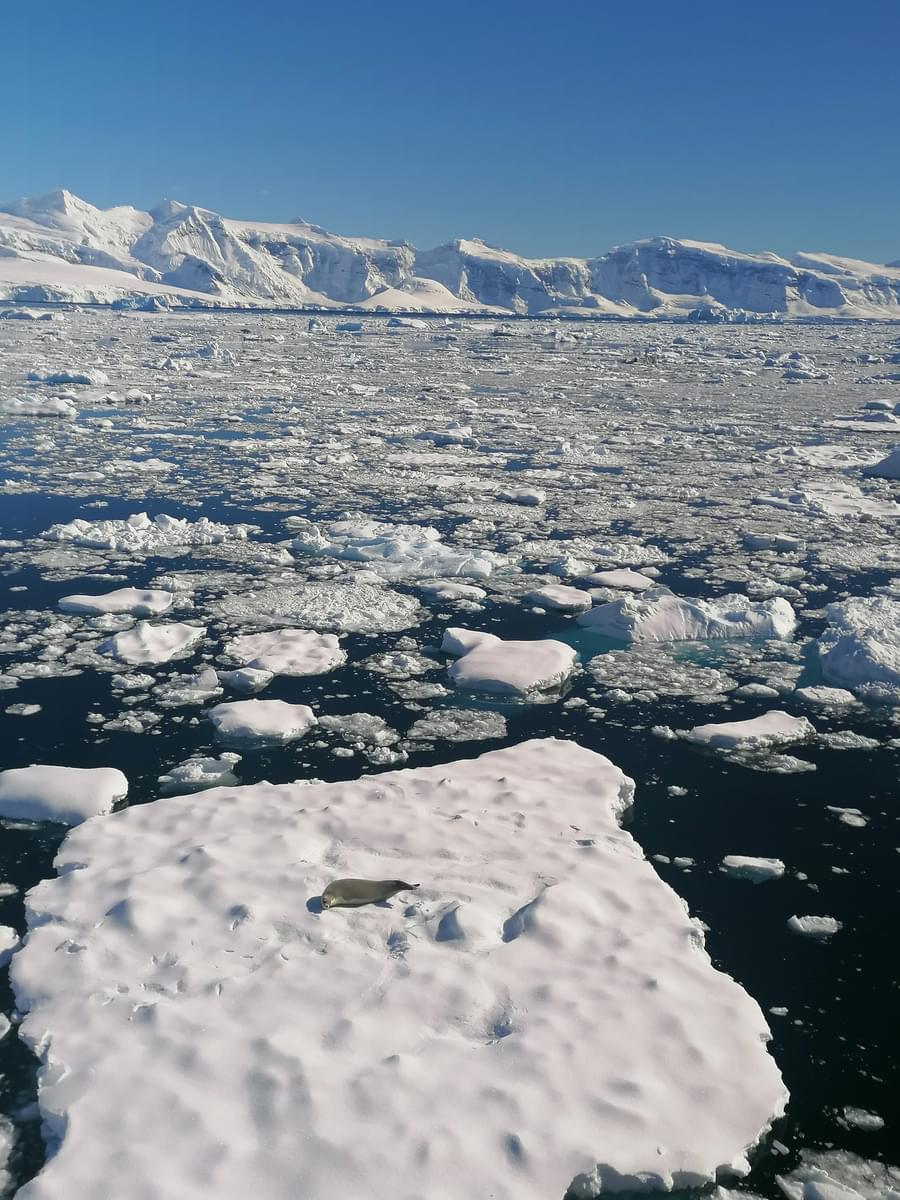
The area around the Gerlache Strait has a mandatory speed restriction of 10kts, which was designated in 2019 and extended temporally for the 2023-2024 Antarctic season. After conducting research into the whales in the area, of which ORCA contributed to, two additional geofenced areas have been added on a voluntary trial basis for the 2023-24 season, before becoming mandatory for the 2025-2026 season, this is the area surrounding the South Shetland Islands and Elephant Island.
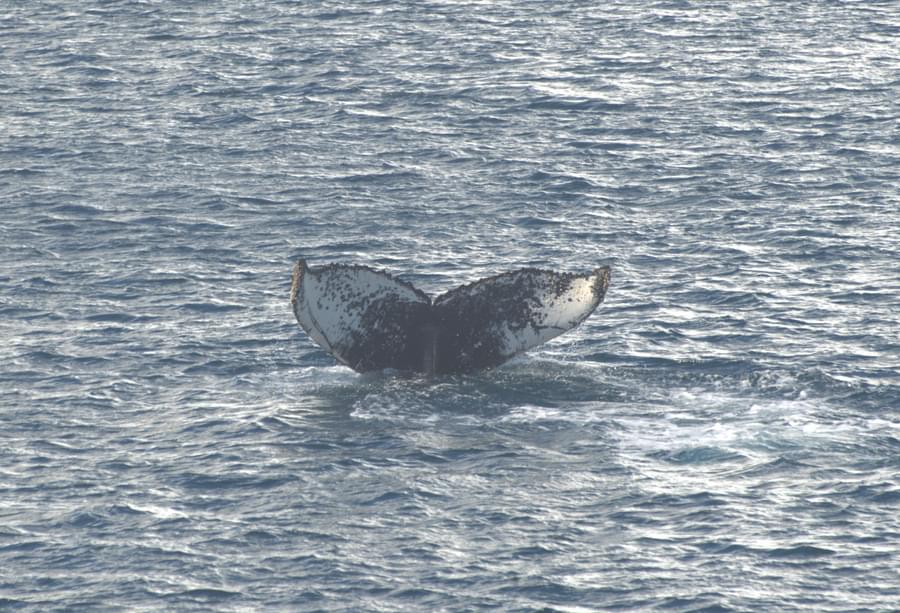

Although we were sad to be leaving the beautiful scenery of the Peninsula, the sea days that followed on our way back to Punta Arenas gave us the opportunity to conduct more surveys, with many whales being recorded making their way down through the Drake Passage to the Peninsula. We were very surprised and relieved to have such good sea conditions for this part of the trip! It was also an opportunity for Jayne and I to deliver a lecture to guests about the project, run an ID and surveying workshop, and give a round-up of our sightings data on the final day of the trip. It was a real highlight of the trip for both of us, being able to talk to guests about the project and ORCA’s work more generally.
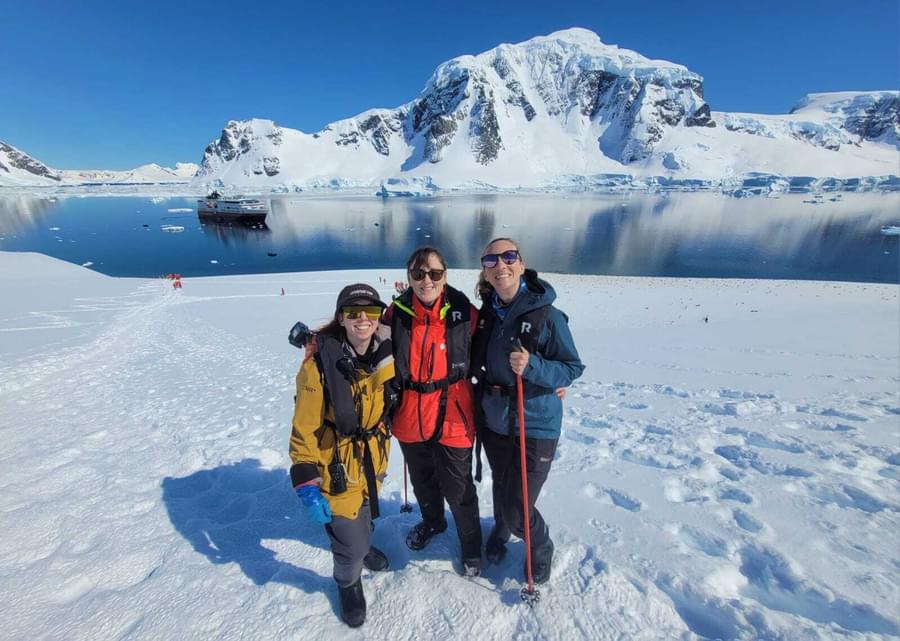
We arrived into Punta Arenas on Friday the 24th November, having time for a brief catch up and hand over with the next ORCA team coming on board before heading to the airport for the long journey home. Carrying out this important research was such a privilege for Jayne and I, and we are so grateful to Hurtigruten, the crew and the Expedition Team for making us feel so welcome and facilitating our data collection throughout the trip. ORCA teams will be on board MS Fram for three more Antarctic itineraries during the 2023-2024 season continuing to conduct this important research.
